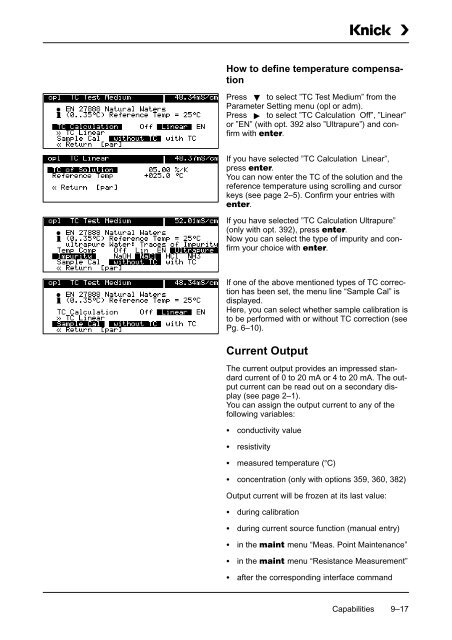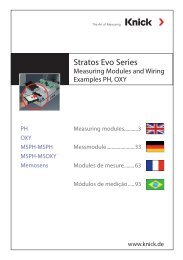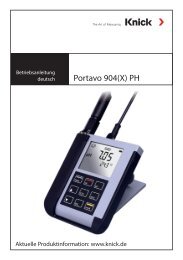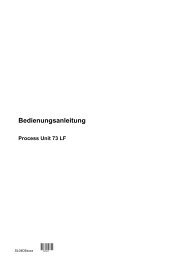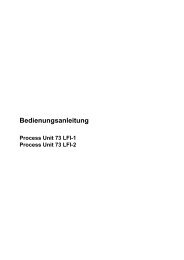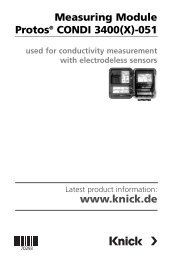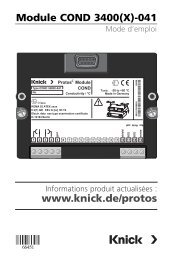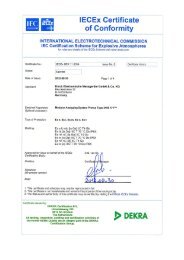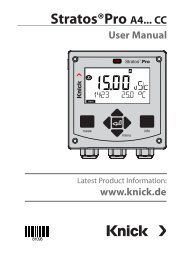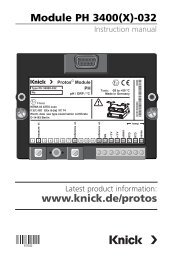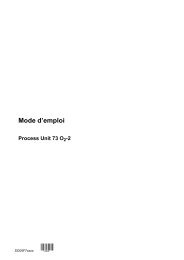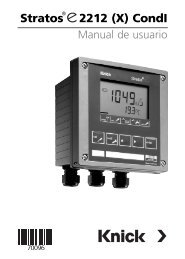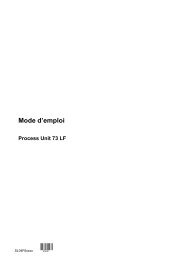Process Unit 73 LF - Knick
Process Unit 73 LF - Knick
Process Unit 73 LF - Knick
Create successful ePaper yourself
Turn your PDF publications into a flip-book with our unique Google optimized e-Paper software.
How to define temperature compensation<br />
Press to select ”TC Test Medium” from the<br />
Parameter Setting menu (opl or adm).<br />
Press to select ”TC Calculation Off”, ”Linear”<br />
or ”EN” (with opt. 392 also ”Ultrapure”) and confirm<br />
with .<br />
If you have selected ”TC Calculation Linear”,<br />
press .<br />
You can now enter the TC of the solution and the<br />
reference temperature using scrolling and cursor<br />
keys (see page 2–5). Confirm your entries with<br />
.<br />
If you have selected ”TC Calculation Ultrapure”<br />
(only with opt. 392), press .<br />
Now you can select the type of impurity and confirm<br />
your choice with .<br />
If one of the above mentioned types of TC correction<br />
has been set, the menu line “Sample Cal” is<br />
displayed.<br />
Here, you can select whether sample calibration is<br />
to be performed with or without TC correction (see<br />
Pg. 6–10).<br />
Current Output<br />
The current output provides an impressed standard<br />
current of 0 to 20 mA or 4 to 20 mA. The output<br />
current can be read out on a secondary display<br />
(see page 2–1).<br />
You can assign the output current to any of the<br />
following variables:<br />
<br />
<br />
<br />
conductivity value<br />
resistivity<br />
measured temperature (C)<br />
concentration (only with options 359, 360, 382)<br />
Output current will be frozen at its last value:<br />
<br />
<br />
<br />
<br />
<br />
during calibration<br />
during current source function (manual entry)<br />
in the menu “Meas. Point Maintenance”<br />
in the menu “Resistance Measurement”<br />
after the corresponding interface command<br />
Capabilities 9–17


